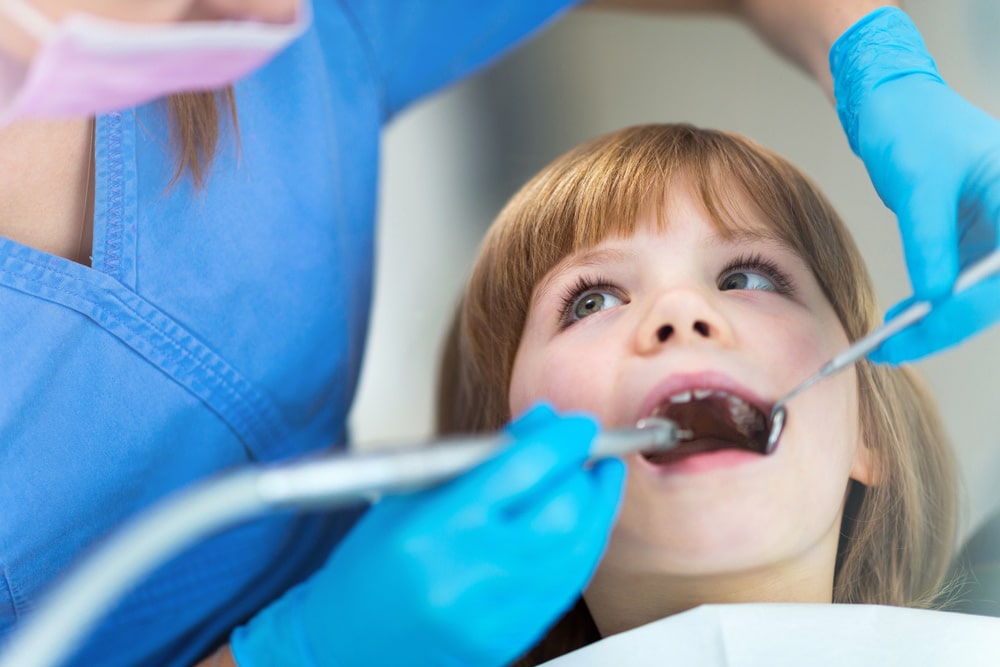Tooth decay in children can be hard to detect in its earliest stages. Unlike sudden toothaches or visible cavities, early decay often develops subtly. Left unaddressed, it may progress into more serious concerns that affect your child’s ability to eat, speak or concentrate comfortably. Recognising early signs allows parents and guardians to act early and discuss concerns with a paediatric dentist.
In this blog, we’ll explore subtle and often overlooked indicators of early tooth decay. These insights are particularly useful for first-time parents looking to establish healthy dental routines for their children. Regular dental visits with a paediatric dentist in Palm Beach can also support these efforts by offering ongoing assessments and tailored advice.
White Spots Aren’t Always Harmless
One of the earliest visible indicators of enamel demineralisation is the presence of white spots on your child’s teeth. These may appear chalky or dull, particularly along the gumline.
While they might look harmless, white spots can signal the breakdown of tooth enamel—the first stage of decay. A paediatric dentist can help evaluate whether these are early signs of concern or part of natural enamel variation.
What to look for:
- Small white spots that weren’t there previously.
- Matte or chalky appearance on the surface of teeth.
- Clusters of spots near the gumline or between teeth.
Monitoring these changes during routine brushing can support timely discussions with your child’s dentist about preventive steps.
Sensitivity During Meals: A Subtle Cry for Help
Children may not always verbalise tooth discomfort clearly, especially regarding early-stage sensitivity. Instead, they may change how or what they eat.
If your child avoids cold, hot, or sweet foods or appears hesitant to chew on one side of their mouth, this could be worth exploring further with your dental practitioner.
What to observe:
- Flinching or pulling away from cold water, ice cream or hot soup.
- Preference for room-temperature or soft foods.
- Complaints of “tingly” or “funny” sensations in the mouth.
Consistent changes in food choices or discomfort during meals can be worth mentioning during dental check-ups.
A Persistent Bad Breath That Won’t Budge
Mild bad breath in children is relatively common, especially in the mornings. However, persistent halitosis despite regular brushing and flossing could point to plaque build-up, early decay, or other dental hygiene concerns.
It may be an early sign of bacterial activity in the mouth, particularly around the teeth and gums.
Warning signs:
- Bad breath that persists after brushing.
- Breath odour that worsens throughout the day.
- Bad taste in the mouth or reluctance to brush.
Discussing breath concerns during dental visits can help identify the root cause, especially if brushing and flossing routines are consistent at home.
Brown or Discoloured Spots: Not Just Food Stains
Changes in tooth colour can be gradual and easy to miss, especially when they resemble common food stains. However, persistent brown or dark spots may indicate a cavity beginning to form.
Unlike white spots that signal early enamel breakdown, brown areas may reflect deeper changes in the tooth’s surface.
Signs to consider:
- Brown, grey or dark marks that do not brush away.
- Spots near the grooves or biting surfaces of molars.
- Discolouration that slowly increases in size or darkness.
While not all discolouration is decay, these signs warrant a professional opinion during your child’s next visit.
Avoiding Brushing Certain Teeth? It Might Be More Than Laziness
If your child is consistently reluctant to brush certain parts of their mouth, there might be more to the story. They could be avoiding areas that feel uncomfortable or sensitive.
When tooth decay is starting to set in, even brushing can trigger minor discomfort. This often leads children to unconsciously neglect those areas, increasing the risk of plaque accumulation.
Behaviours to monitor:
- Skipping certain teeth or brushing one side more than the other.
- Rushing or resisting the evening brushing routine.
- Complaints about soreness near specific teeth.
Observing these behaviours and gently asking why can offer helpful clues for your paediatric dentist during routine visits.
Teeth That Feel Rough or Look Uneven
Tooth enamel affected by early decay may feel rough or develop an irregular texture. Children might run their tongue over affected areas or describe the tooth as “weird” or “sharp.”
Parents may also notice that a previously smooth tooth has started looking jagged or worn.
Potential indicators:
- Small pits, grooves or ridges on the surface.
- Uneven edges or unexpected roughness.
- Teeth that appear chipped without visible injury.
These changes might not cause pain initially, but are worth noting and discussing with a dental professional.
Swollen Gums Near the Trouble Spot
Swelling or redness in the gums, especially in one area of the mouth, can indicate the early stages of gum irritation or decay beneath the gumline.
While gum issues can have various causes, swelling adjacent to a tooth may suggest localised plaque build-up or emerging dental problems.
Things to watch for:
- Puffiness or redness near a specific tooth.
- Bleeding during brushing in the same area.
- Discomfort when touching the gums.
These signs can help prevent progression to more complex dental concerns when noted early.
Changes in Eating Habits You Didn’t Expect
When a child suddenly avoids favourite foods or shifts toward soft-textured meals, it may be a response to discomfort caused by emerging tooth decay.
Even without vocal complaints, these behavioural cues can be early indicators of something affecting your child’s oral comfort.
Watch for:
- Avoid crunchy snacks like apples or carrots.
- Taking longer to finish meals or skipping them altogether.
- Eating on one side of the mouth only.
Keeping track of such changes can help guide discussions at your child’s next dental check-up.
Looking Into Preventive Care? Consult Our Paediatric Dentist in Palm Beach
At Dental Haus, we work alongside families to observe and support children’s dental development from the early years onward. Recognising the early signs of tooth decay can be unfamiliar, especially for first-time parents.
Our paediatric dental services in Palm Beach offer an environment focused on helping children feel comfortable during their visits. If you’ve noticed any of the signs outlined above or are seeking more guidance on preventive care, we welcome you to reach out.
Book a consultation or contact us via our website. Exploring dental care early may help shape healthy, long-term habits.




